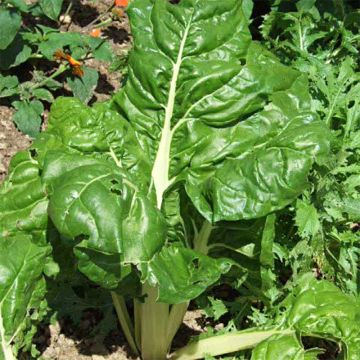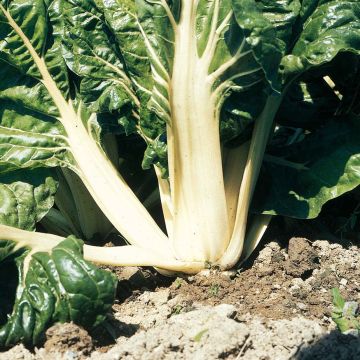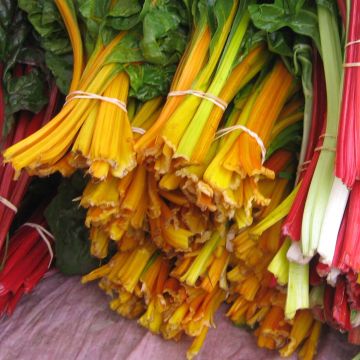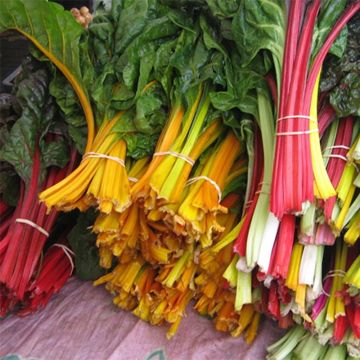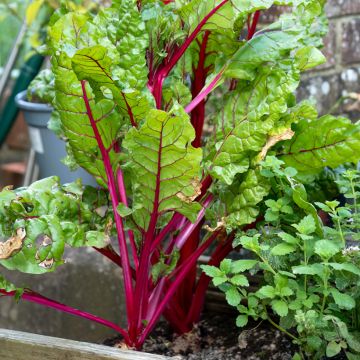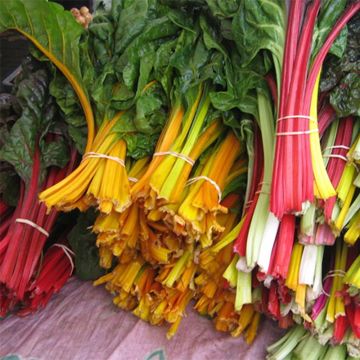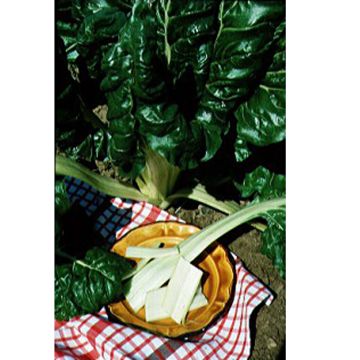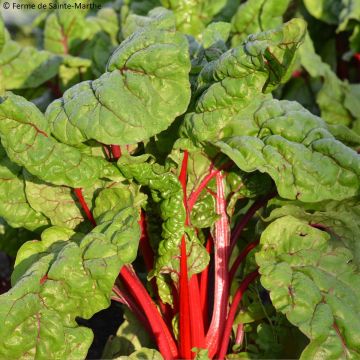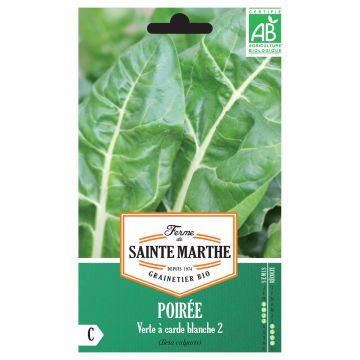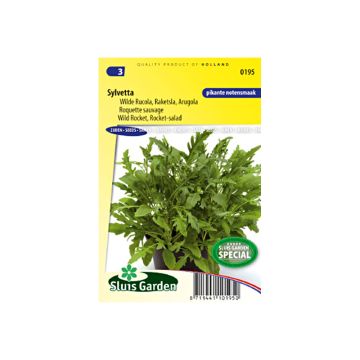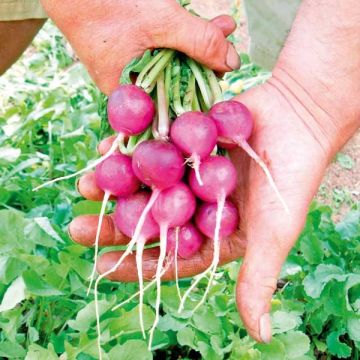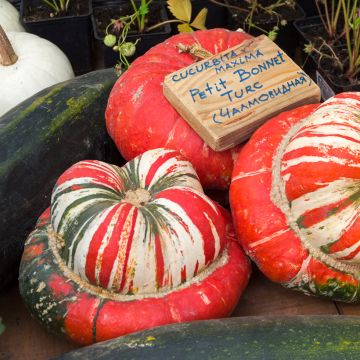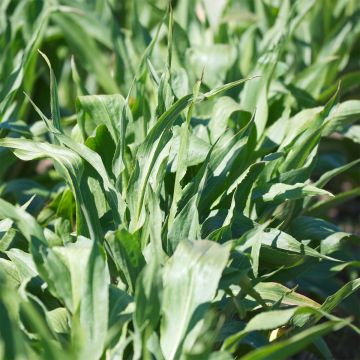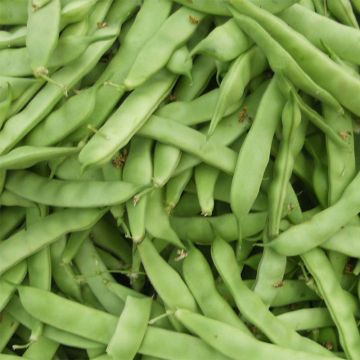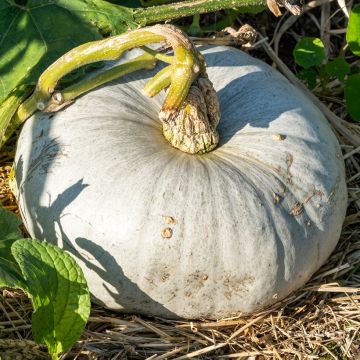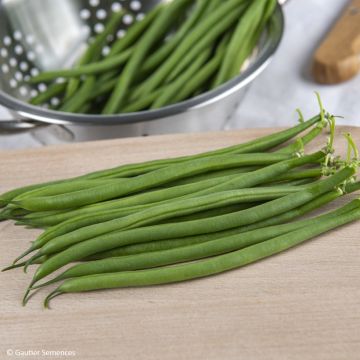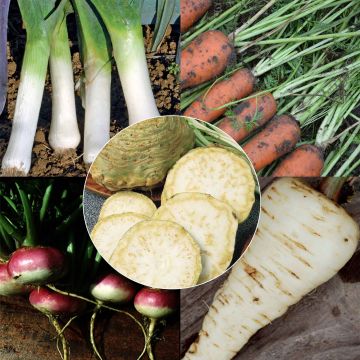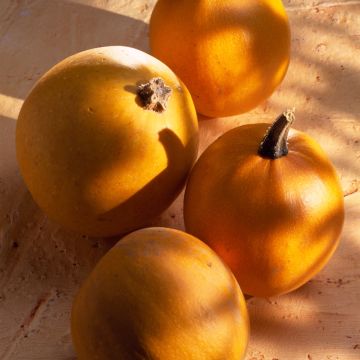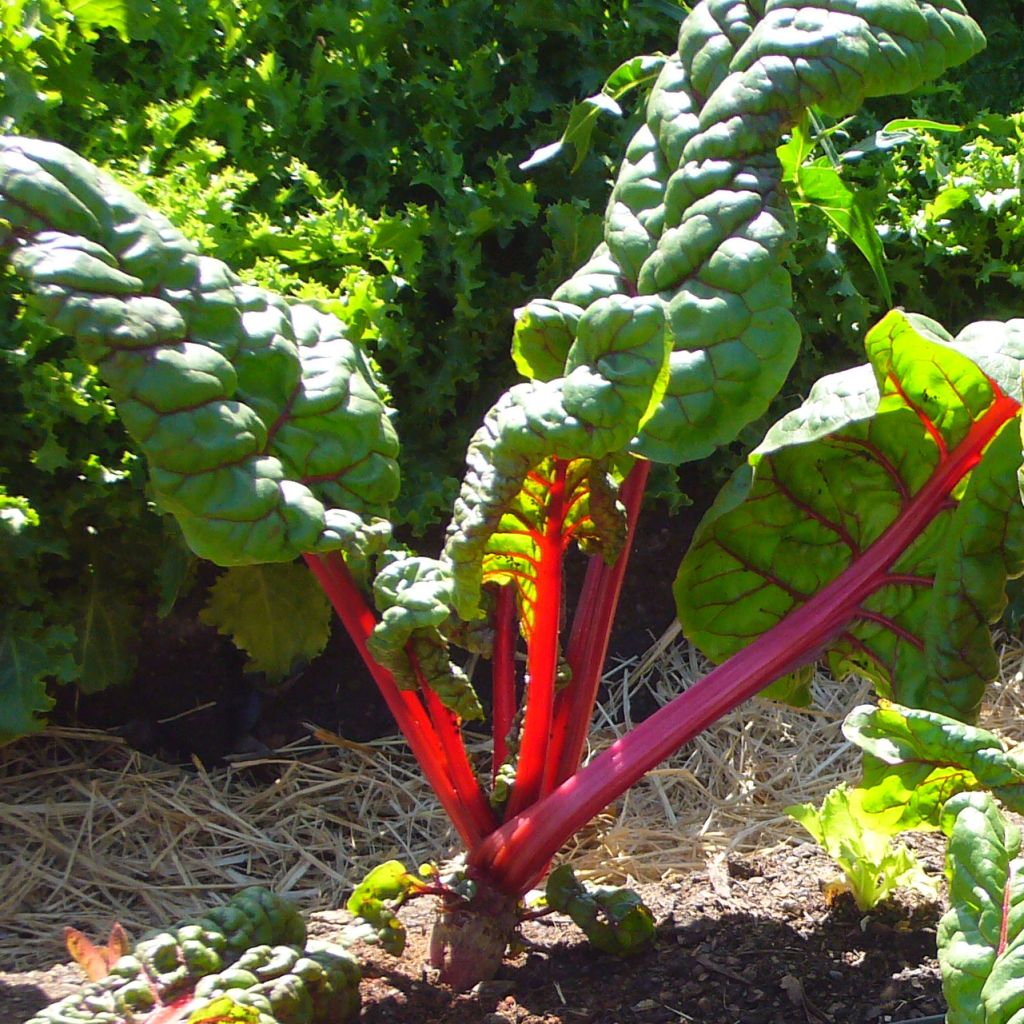

Swiss Chard Rhubarb
Swiss Chard Rhubarb
Beta vulgaris Rhubarb Chard
Swiss Chard Rhubarb
Very good germination rate, good growth, leaves and stalks are very good. And magnificent to look at!
Mylène B., 17/09/2020
This item cannot be shipped to the selected country
Dispatch by letter from €3.90
More information
Schedule delivery date,
and select date in basket
This plant carries a 6 months recovery warranty
More information
We guarantee the quality of our plants for a full growing cycle, and will replace at our expense any plant that fails to recover under normal climatic and planting conditions.
Seed-only orders are dispatched by sealed envelope. The delivery charge for seed-only orders is €3.90.
Description
'Rhubarb' chard is an excellent quality, ornamental variety that produces attractive dark green leaves and bright red stems. Delicious sautéed in butter or in gratin (unfortunately the stems don’t hold their bright colour when cooked). Sow from April to July. Harvest from July to November.
Chard (Beta vulgaris), also known as leaf beet or silver beet, is a leaf vegetable that has regained popularity over recent years. Its edible stems come in an array of colours, from white to red, purple or yellow. They are delicious in gratin, sautéed or lightly steamed. The leaves can be used like spinach in quiches, omelettes or soups. Chard is low in calories and high in fibre, vitamins and minerals. However, it also contains oxalates and should be eaten in moderation, especially by those suffering from arthritis or rheumatic disorders.
Harvesting: harvest the larger leaves as and when required
Storage: chard will stay fresh in the refrigerator for a few days
Good to know: Mulching with grass clippings or dead leaves is recommended, especially during hot dry spells, as this will help keep the soil moist whilst limiting weed growth.
Report an error about the product description
Harvest
Plant habit
Foliage
Botanical data
Beta
vulgaris
Rhubarb Chard
Chenopodiaceae
Swiss Chard Rhubarb
Mediterranean
Biennial
Other Swiss Chard seeds
Planting and care
Soil preparation: chard enjoys free-draining, moist and rich soils with a good supply of organic matter. Make sure to amend your soil several months in advance, as the plants may suffer from too recent soil amendments. Choose an open, sunny location in cool, well-loosened soil.
Direct sowing is recommended as transplanting sometimes causes premature bolting.
Sow 3-4 seeds every 40 cm, or in shallow-bottomed furrows, 40 cm apart. Cover the seeds with about 1 cm of fine soil and water regularly until germination. When the seedlings have 3-4 true leaves, thin them out by keeping the strongest plant every 40 cm.
Care:
Hoe and weed around your plants regularly. Water generously, and often and use mulch to keep the soil moist. Under certain climates (with winter temperatures above -6°C), chard can spend the winter outdoors with a good layer of mulch.
Seedlings
Care
Intended location
-
, onOrder confirmed
Reply from on Promesse de fleurs
Vegetable seeds
Haven't found what you were looking for?
Hardiness is the lowest winter temperature a plant can endure without suffering serious damage or even dying. However, hardiness is affected by location (a sheltered area, such as a patio), protection (winter cover) and soil type (hardiness is improved by well-drained soil).

Photo Sharing Terms & Conditions
In order to encourage gardeners to interact and share their experiences, Promesse de fleurs offers various media enabling content to be uploaded onto its Site - in particular via the ‘Photo sharing’ module.
The User agrees to refrain from:
- Posting any content that is illegal, prejudicial, insulting, racist, inciteful to hatred, revisionist, contrary to public decency, that infringes on privacy or on the privacy rights of third parties, in particular the publicity rights of persons and goods, intellectual property rights, or the right to privacy.
- Submitting content on behalf of a third party;
- Impersonate the identity of a third party and/or publish any personal information about a third party;
In general, the User undertakes to refrain from any unethical behaviour.
All Content (in particular text, comments, files, images, photos, videos, creative works, etc.), which may be subject to property or intellectual property rights, image or other private rights, shall remain the property of the User, subject to the limited rights granted by the terms of the licence granted by Promesse de fleurs as stated below. Users are at liberty to publish or not to publish such Content on the Site, notably via the ‘Photo Sharing’ facility, and accept that this Content shall be made public and freely accessible, notably on the Internet.
Users further acknowledge, undertake to have ,and guarantee that they hold all necessary rights and permissions to publish such material on the Site, in particular with regard to the legislation in force pertaining to any privacy, property, intellectual property, image, or contractual rights, or rights of any other nature. By publishing such Content on the Site, Users acknowledge accepting full liability as publishers of the Content within the meaning of the law, and grant Promesse de fleurs, free of charge, an inclusive, worldwide licence for the said Content for the entire duration of its publication, including all reproduction, representation, up/downloading, displaying, performing, transmission, and storage rights.
Users also grant permission for their name to be linked to the Content and accept that this link may not always be made available.
By engaging in posting material, Users consent to their Content becoming automatically accessible on the Internet, in particular on other sites and/or blogs and/or web pages of the Promesse de fleurs site, including in particular social pages and the Promesse de fleurs catalogue.
Users may secure the removal of entrusted content free of charge by issuing a simple request via our contact form.
The flowering period indicated on our website applies to countries and regions located in USDA zone 8 (France, the United Kingdom, Ireland, the Netherlands, etc.)
It will vary according to where you live:
- In zones 9 to 10 (Italy, Spain, Greece, etc.), flowering will occur about 2 to 4 weeks earlier.
- In zones 6 to 7 (Germany, Poland, Slovenia, and lower mountainous regions), flowering will be delayed by 2 to 3 weeks.
- In zone 5 (Central Europe, Scandinavia), blooming will be delayed by 3 to 5 weeks.
In temperate climates, pruning of spring-flowering shrubs (forsythia, spireas, etc.) should be done just after flowering.
Pruning of summer-flowering shrubs (Indian Lilac, Perovskia, etc.) can be done in winter or spring.
In cold regions as well as with frost-sensitive plants, avoid pruning too early when severe frosts may still occur.
The planting period indicated on our website applies to countries and regions located in USDA zone 8 (France, United Kingdom, Ireland, Netherlands).
It will vary according to where you live:
- In Mediterranean zones (Marseille, Madrid, Milan, etc.), autumn and winter are the best planting periods.
- In continental zones (Strasbourg, Munich, Vienna, etc.), delay planting by 2 to 3 weeks in spring and bring it forward by 2 to 4 weeks in autumn.
- In mountainous regions (the Alps, Pyrenees, Carpathians, etc.), it is best to plant in late spring (May-June) or late summer (August-September).
The harvesting period indicated on our website applies to countries and regions in USDA zone 8 (France, England, Ireland, the Netherlands).
In colder areas (Scandinavia, Poland, Austria...) fruit and vegetable harvests are likely to be delayed by 3-4 weeks.
In warmer areas (Italy, Spain, Greece, etc.), harvesting will probably take place earlier, depending on weather conditions.
The sowing periods indicated on our website apply to countries and regions within USDA Zone 8 (France, UK, Ireland, Netherlands).
In colder areas (Scandinavia, Poland, Austria...), delay any outdoor sowing by 3-4 weeks, or sow under glass.
In warmer climes (Italy, Spain, Greece, etc.), bring outdoor sowing forward by a few weeks.

































